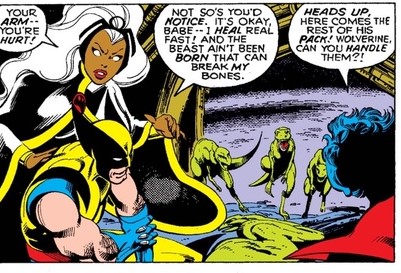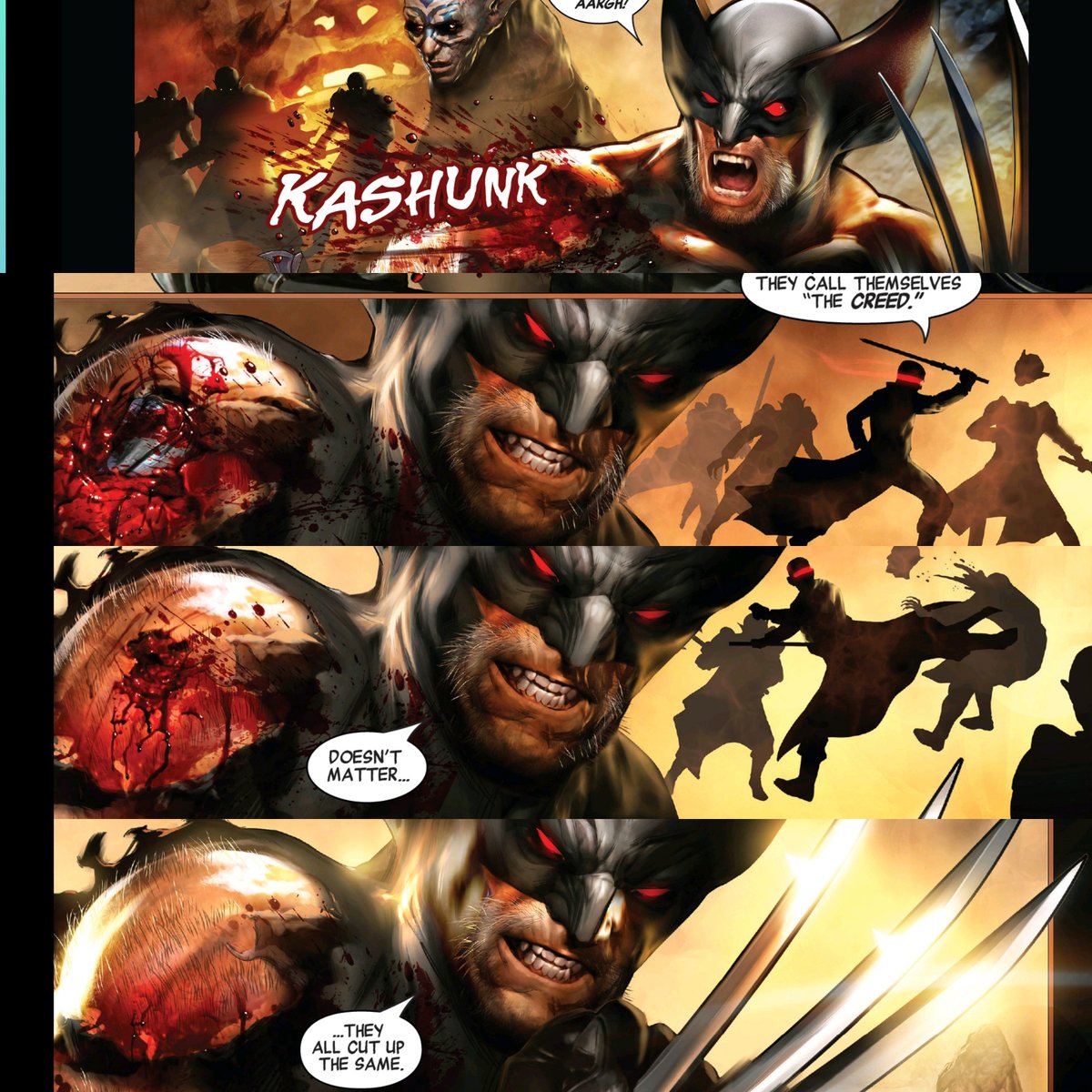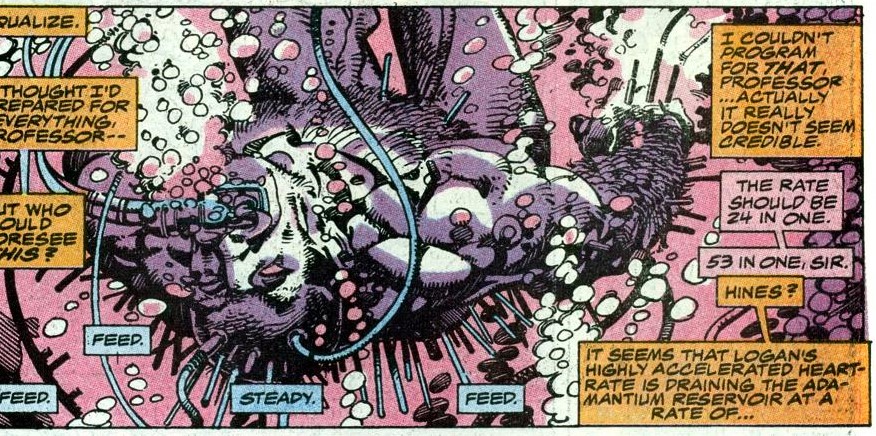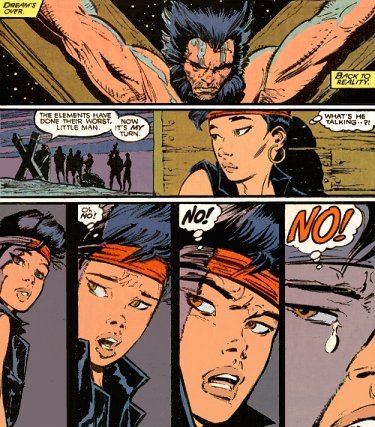Wolverine’s healing factor creates a dynamic yet contradictory power fantasy that winds up burdening his stories with an endless escalation of bodily trauma in order to preserve the impact of the portrayal. #xmen #wolverine 1/7 @WolverSteve
Part of the fantasy is being invulnerable and immortal, and true to form, Wolverine can walk away from all manner of fatal injuries without any long-standing physical consequence. Just as bullets bounce off Superman, Wolverine endures. 2/7
At the same time, though, Wolverine’s power is only actually visible when he gets hurt and the more he gets hurt (the more horrific the injury) the greater the spectacle of his superpower as it heals that new horror. 3/7
Thus, in order to build a spectacle of his superpower (arguably the narrative core of any superhero book) and create the invulnerability fantasy, you have to hurt him, and the more you hurt him, the more you cultivate the fantasy of invulnerability. 4/7
Furthermore, because of the law of diminishing returns, you have to keep hurting him more and more in order to maintain that spectacle, a problem that has haunted the character since, and one that has necessitated increasing his power to a hilarious degree. 5/7
In this sense, Claremont had a major advantage over other Wolverine writers, in that Logan& #39;s power was new to readers and had not yet overaccelerated (leaving writers with nowhere to go and a character who cannot credibly be considered to be in any danger at most any point.) 6/7

 Read on Twitter
Read on Twitter








